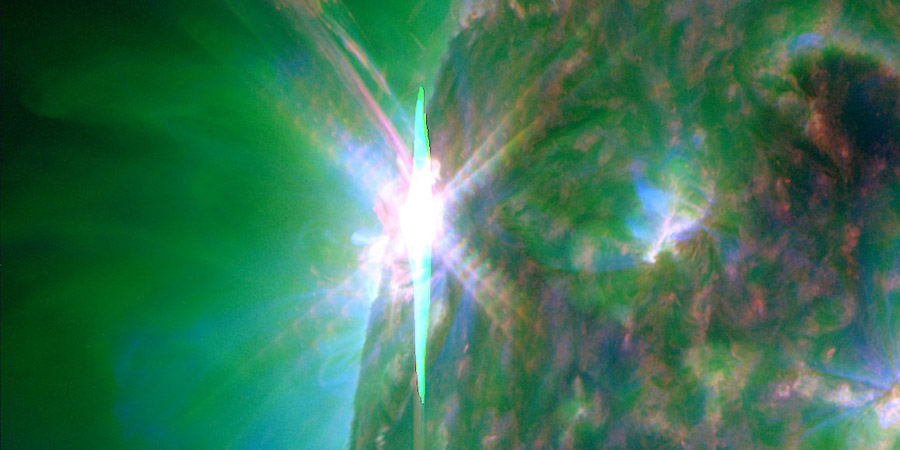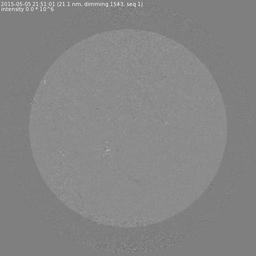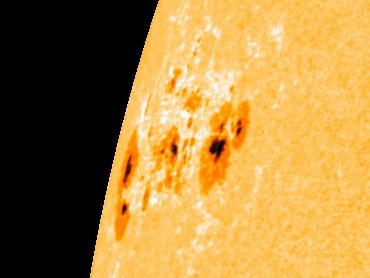X2.7 solar flare, filament eruption
Wednesday, 6 May 2015 00:13 UTC

Solar activity is kicking into high gear thanks to sunspot region 2339 (ex-2322) as it produced the first X-class solar flare in almost two months: an impulse X2.74 solar flare that peaked yesterday at 22:11 UTC.
Major X2.74 solar #flare from #sunspot region 12339 - Follow live on http://t.co/XHATH0OOfT pic.twitter.com/zIcBZChMeo
— SpaceWeatherLive (@_SpaceWeather_) 5 mei 2015
This solar flare was impulsive but it nonetheless looks like it might have been an eruptive event when watching SDO imagery. The resulting coronal mass ejection will however not come towards Earth as sunspot region 2339 is still very close to the east limb.

Image: SDO difference animation showing the eruptive nature of the X2.7 solar flare and a filament releasing at the same time.
Video: Video of these events by SDO in the 304 Ångström wavelength.
An interesting thing you can notice in the animation above is that there was also a filament eruption at an earth-facing location at the same time. It looks like most of the material fell back down onto the Sun but if some plasma escaped into space and produced an earth-directed coronal mass ejection we will of course inform you about that once SOHO coronagraph imagery becomes available.
A quick look at sunspot region 2339 shows that while it is still too close to the limb to discuss it's magnetic layout, there are a very decent ammount of sunspots available with some faculae. In the next 24 to 48 hours we will see if this sunspot region is in decay or perhaps still in a phase of growth and see it's magnetic layout.

Image: SDO/HMI image showing sunspot region 2339 in visible light.
The X2.7 solar flare was the strongest solar flare that took place yesterday but there were also four M-class solar flares. Two from sunspot region 2339 and two from 2335. Available coronagraph imagery show multiple coronal mass ejections but none directed towards Earth. SOHO imagery of the X2.7 solar flare and the filament eruption mentioned above are not yet available.
Thank you for reading this article! Did you have any trouble with the technical terms used in this article? Our help section is the place to be where you can find in-depth articles, a FAQ and a list with common abbreviations. Still puzzled? Just post on our forum where we will help you the best we can!
Latest news
Latest forum messages
Support SpaceWeatherLive.com!
A lot of people come to SpaceWeatherLive to follow the Sun's activity or if there is aurora to be seen, but with more traffic comes higher server costs. Consider a donation if you enjoy SpaceWeatherLive so we can keep the website online!

Space weather facts
| Last X-flare | 2025/03/28 | X1.1 |
| Last M-flare | 2025/03/31 | M1.2 |
| Last geomagnetic storm | 2025/03/27 | Kp5 (G1) |
| Spotless days | |
|---|---|
| Last spotless day | 2022/06/08 |
| Monthly mean Sunspot Number | |
|---|---|
| February 2025 | 154.6 +17.6 |
| Last 30 days | 127.7 -23.5 |


